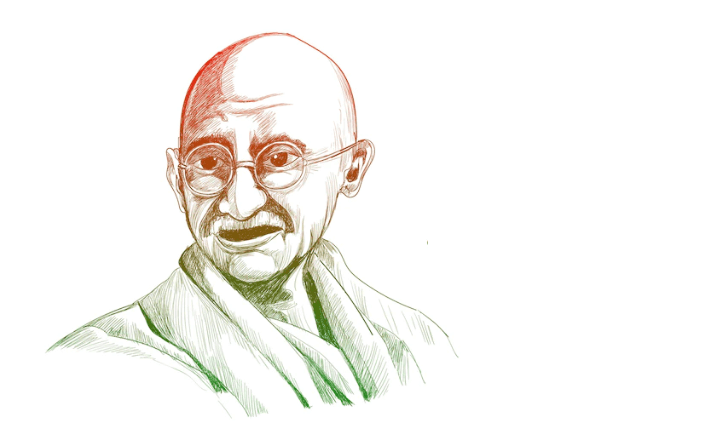Updated March 18, 2023
About Mahatma Gandhi (Essay)
Mohandas Karamchand Gandhi, commonly known as ‘Mahatma Gandhi,’ was one of India’s remarkable fathers who aspired to become a nobleman and contributed significantly to the great Indian liberation movement against British domination in India. He was a person of ideals, as well as calmness and confidence. His non-violent actions included non-violent protests and opposition against the Britishers. These activities had a long-lasting impact on the British, and they also supported India in gaining the respect of world leaders and acquiring awareness on international forums.
Mahatma Gandhi’s Family and Life
1. Birth and Childhood
Mahatma Gandhi was born on October 02, 1869, in Porbandar, Gujarat, western India. During that period, Mahatma Gandhi’s father, Karamchand Gandhi, was Porbandar’s CM (Chief Minister), and his mother, Putlibai, was a very faithful and helpful woman. Mahatma Gandhi reflected on his mother and received her strong morals, principles, and sense of sacrifice.
2. Marriage and Education
Mahatma Gandhi married Kasturba Makanji when he was only 13 years old. After having a son in 1888, he traveled to London for further education. In 1893, he moved to South Africa to pursue his professional career in law, where he suffered racial injustice from the British rulers. When Mahatma Gandhi was traveling, his co-travelers forced him to get off a first-class train cabin due to his ethnicity and color.
3. Movement of Fundamental Rights in South Africa
After experiencing unfairness due to his ethnicity and color, Mahatma Gandhi pledged to fight and confront racial injustice against immigrants in South Africa. In 1894, he founded the NIC (Natal Indian Congress) and began campaigning against racial injustice. He spent roughly 21 years in South Africa fighting for the Fundamental Rights of immigrants.
4. Mahatma Gandhi in the Indian Freedom Struggle
In 1915, Mahatma Gandhi came back to India, joined the INC (Indian National Congress), began to speak out in opposition to the British government in India, and asked for ‘Purn Swaraj’ for India. In his long and detailed search for independence, he organized several non-violent groups and rallies against the Britishers and went to jail several times. His ‘Ahimsa’ ethic, which means not to hurt anyone, was widely respected and adopted by many notable persons worldwide.
What are Mahatma Gandhi’s Accomplishments?
Mahatma Gandhi was a person with a goal who battled for the country’s freedom and made significant support to eliminate numerous societal issues. His major achievements are:
The face of the Indian Freedom Struggle
He was the generous face of the Indian freedom movement. Through fair and non-violent rallies, he opposed British control in India. His non-violent acts include the Civil Disobedience Movement, Quit India Movement, Salt March, Champaran Satyagrah, and many others. In 1930, he also led a mass protest against the British-imposed tax on salt. This protest, known as the Salt March, was a turning point in the independence movement. In 1947, after years of peaceful protests and civil disobedience, Gandhi finally persuaded the British to grant India independence. A Hindu nationalist assassinated Gandhi in 1948.
Eliminate the Issues of Society
Mahatma Gandhi also strived to eliminate the social issues in the community at the time. He started several initiatives to give untouchables equal rights and enhance their social position. He also focused on women’s rights and literacy and was against child marriage, which greatly impacted Indian society.
Final Thoughts
Mahatma Gandhi empowered India to establish ‘Purna Swaraj,’ or full freedom and provided the country with international respect. He died on January 30, 1948. His aspirations and beliefs live in the hearts of his believers, leading spark in their lives. He demonstrated that if you have a strong will, bravery, and purposefulness, everything is achievable in the world.
Recommended Articles
We hope that this EDUCBA information on “Essay On Mahatma Gandhi” was beneficial to you. You can view EDUCBA’s recommended articles for more information,

